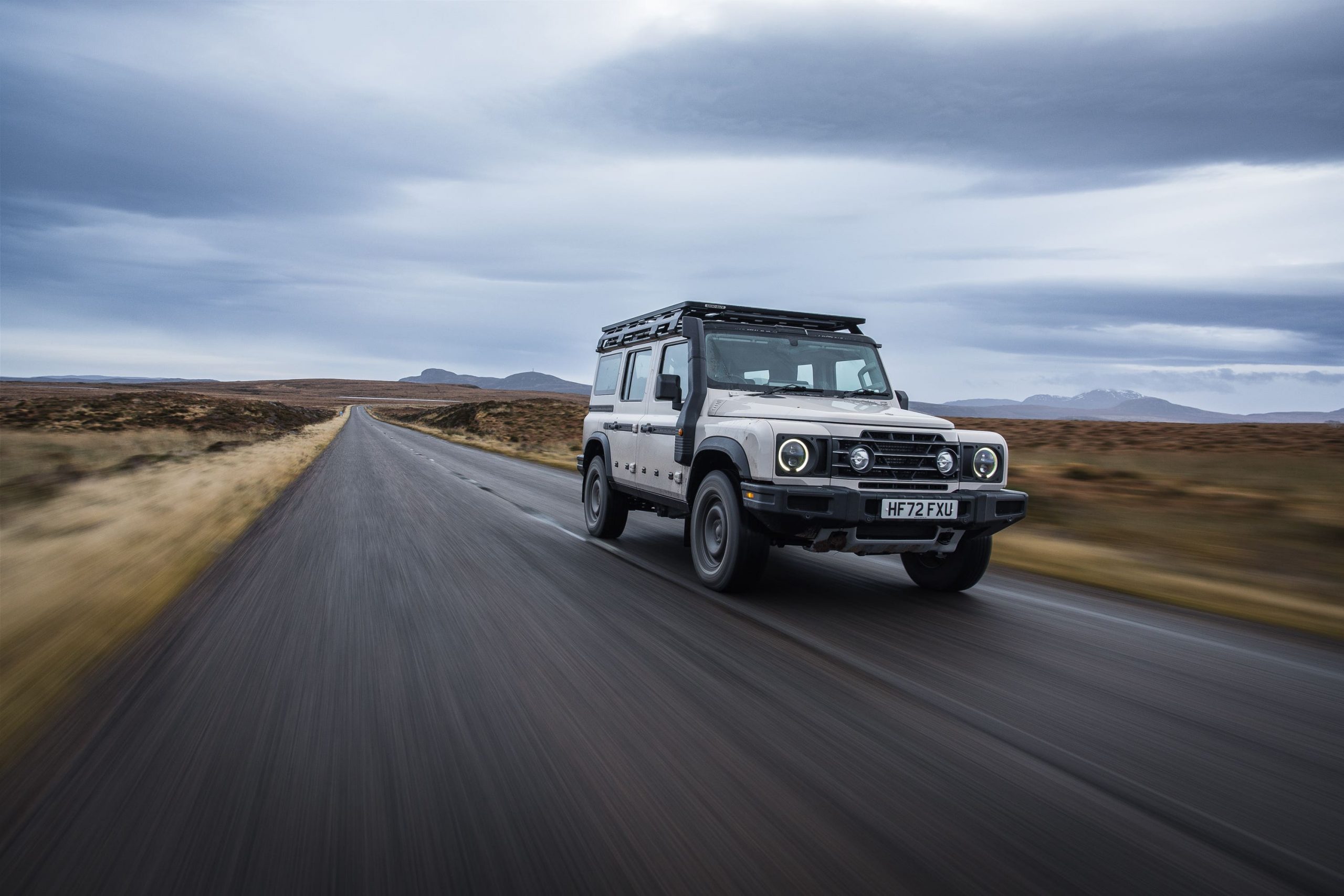What is it?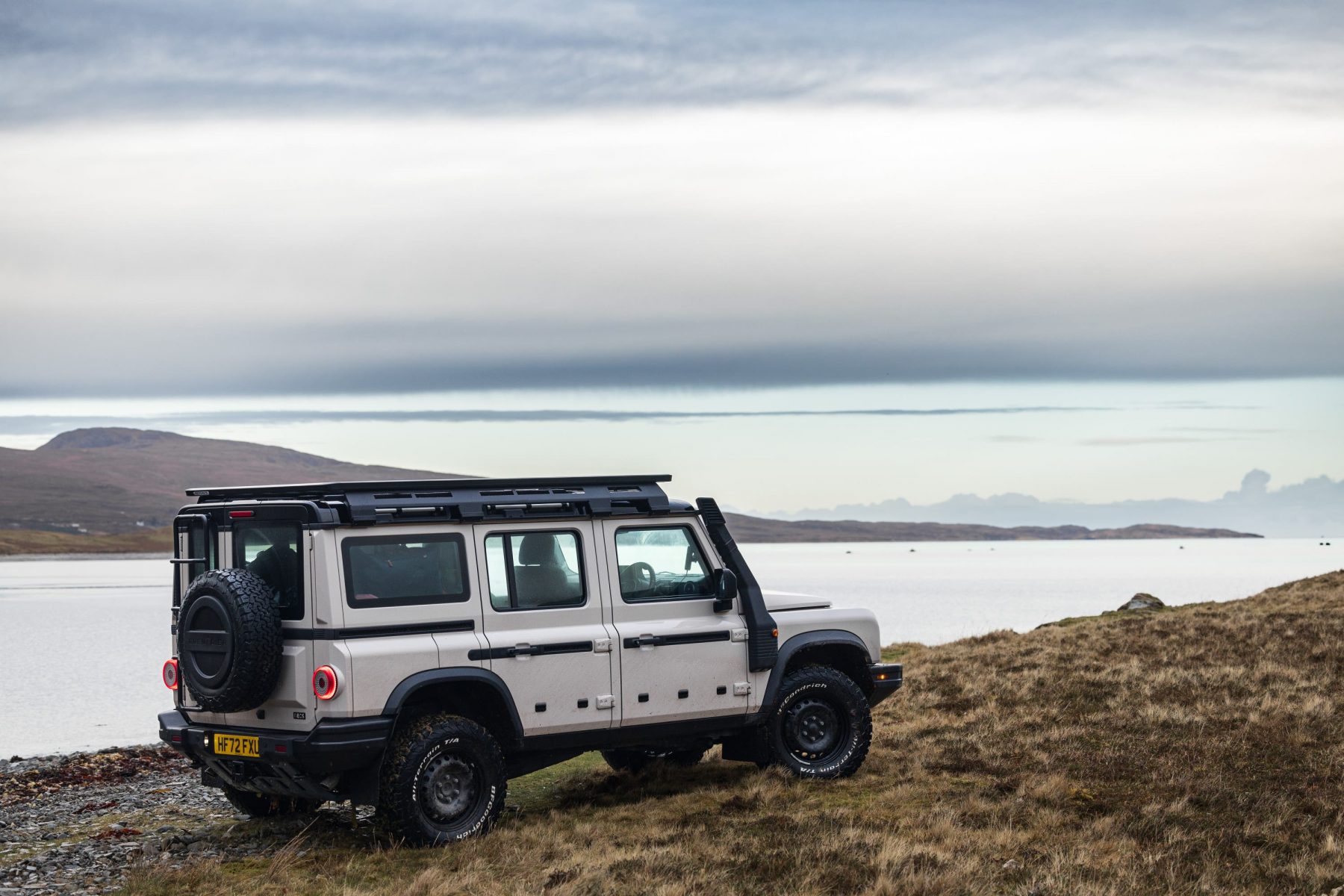
When Land Rover took the original Defender out of production, it left quite a gap. Fortunately, Jim Ratcliffe – billionaire CEO of chemicals firm Ineos – decided that this space couldn’t be left unplugged and set to work creating an off-roader that would deliver the same kind of rough-and-ready experience as the original Defender, but with a few more creature comforts and fewer rough edges. The result? The Grenadier.
It’s an uncompromising go-anywhere vehicle designed to give an option to drivers who want a car that’ll go here, there and everywhere while bringing a little extra charm than you might find in the current crop of largely road-focused SUVs. We’ve been testing it out to see what it’s like.
What’s new?
The Grenadier is a heady mix of old and new. Underneath, we’ve got a traditional ladder chassis to help with rigidity and outright assuredness off-road, while optional lockable differentials should ensure that it can drag itself out of the stickiest of situations. Sitting on top is a boxy body with a rough exterior that is designed to be fixed easily and quickly if things get damaged.
And despite its British-ness, the Grenadier isn’t a product of these shores; built in Hambach, France, using largely German components, it’s been co-developed by Austrian specialists Magna Steyr which counts the legendary Mercedes G-Class among its list of car-building accomplishments.
What’s under the bonnet?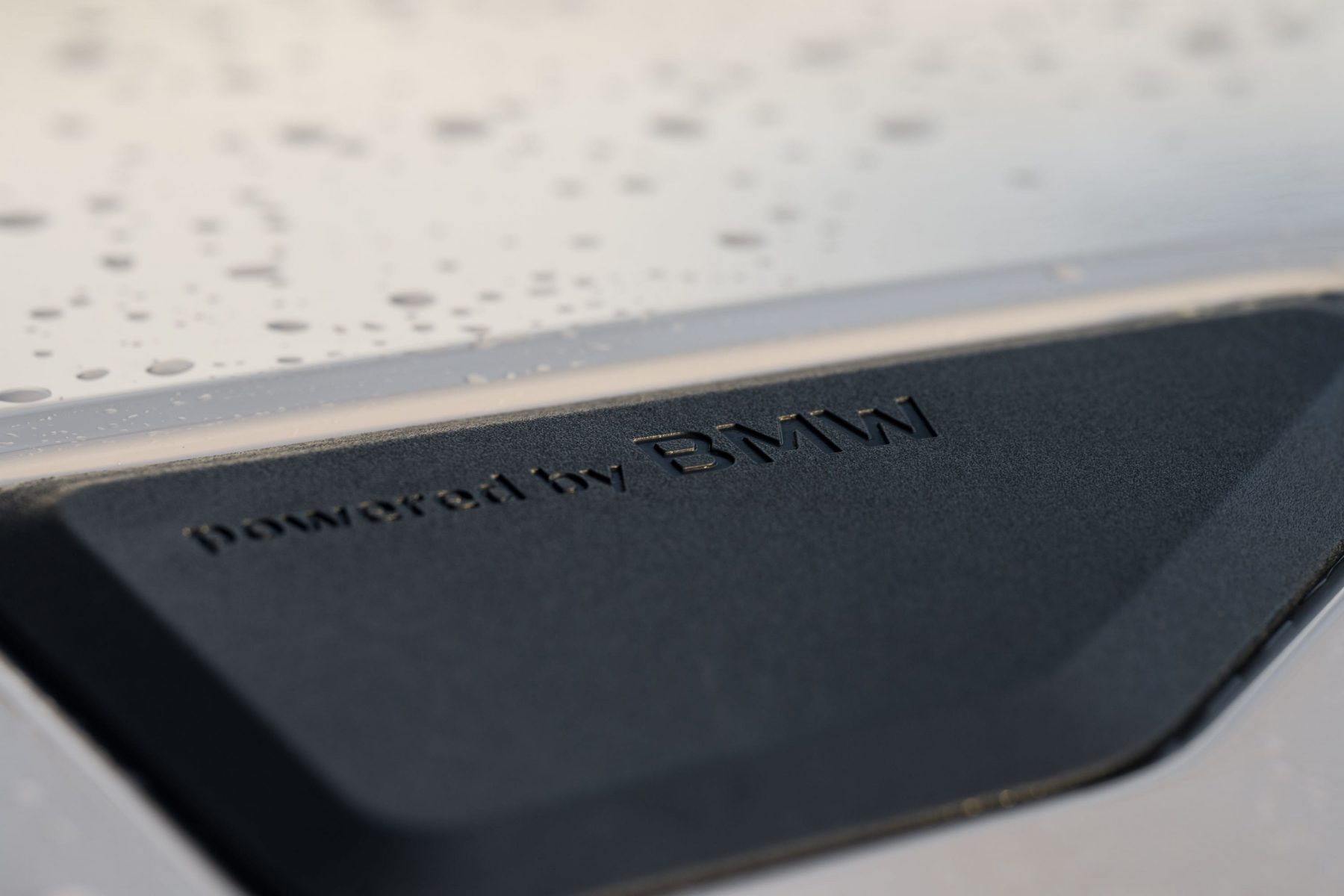
Ineos hasn’t wasted time developing its own engines for the Grenadier, instead turning to BMW for two of its trusted powerplants. While a petrol version is available, we’ve been driving the diesel which, for many drivers, will be the go-to option thanks to its plentiful 550Nm of torque. You’ve got 248bhp, too, sent to all four wheels via a smooth-shifting ZF eight-speed gearbox – again, a trusted choice in the market.
Our Trialmaster-specification car rides on chunky BF Goodrich all-terrain tyres as standard, too, while differential locks front, middle and rear are equipped from the off on Grenadier, too. In terms of efficiency, Ineos claims 23.3mpg for the Grenadier while CO2 emissions of 310g/km are pretty high.
What’s it like to drive?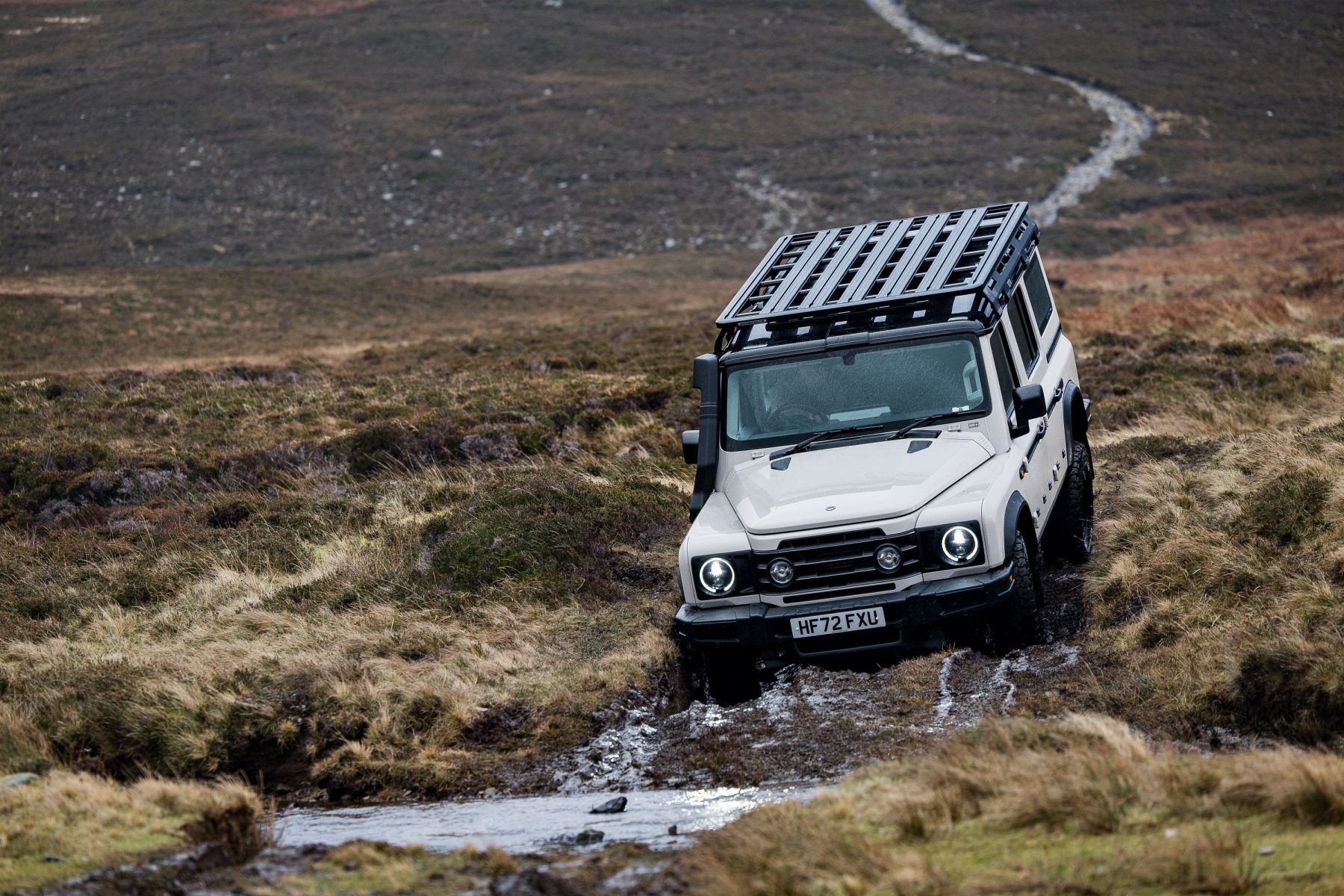
If you’re stepping out from a modern, road-focused SUV – or any other modern car, for that matter – then it’s quite the adjustment process driving the Grenadier. It uses a classic recirculating ball-hydraulic steering system which, at low speeds, is wayward and pretty loose.
Even turning into a junction or navigating a roundabout takes more concentration than you’d expect. It’s better with speed, however, and on the motorway the Grenadier bowls along nicely with a surprising lack of wind noise. The chunky tyres don’t generate too much roar, either, and the engine has a pleasantly robust noise to it.
But off-road, it all makes sense. This loose steering inspires a bit more confidence on the rough stuff – it has less tendency to ‘snap’ around like other modern power steering systems – while the short overhangs mean you’re never scared about clanging the front or rear when climbing or descending. We put the Grenadier through some pretty tough Welsh routes and it never faltered and, though we did lock the diffs on occasions to help out, it felt as though it could handle all of it without anything being engaged.
How does it look?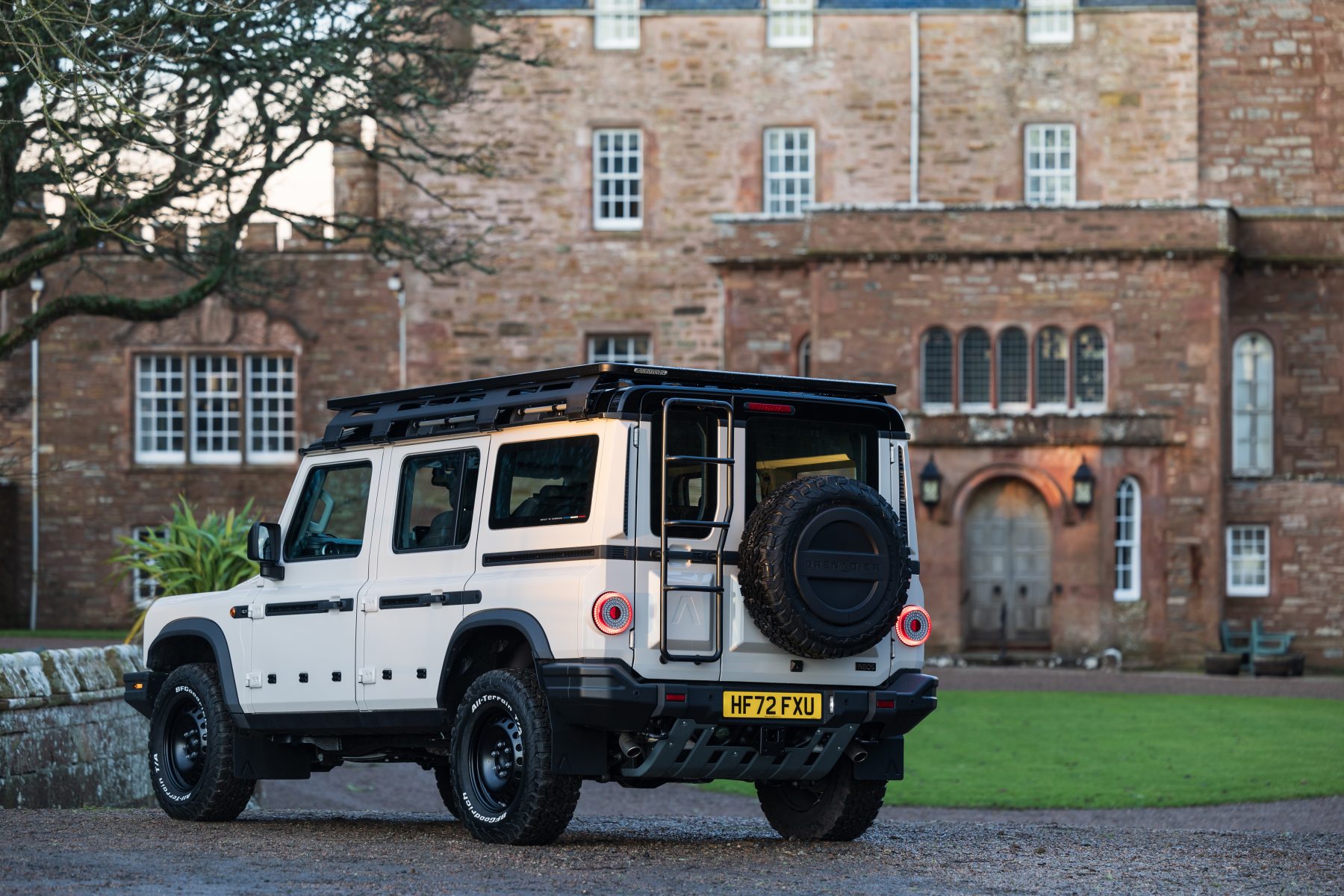
We think it’s pretty easy to see where the Grenadier’s design inspiration has come from. It has similar proportions and chunky dimensions to the original Defender and that means today it really stands out in the new car market. You can get it in a variety of specifications which slightly tweak it, too, but all versions get the same flat-panel appearance which did get the nod from various drivers of ‘original’ Defenders during our time with the Grenadier.
The one thing we would say is that this is a tall car, so entering or exiting it can be a bit of a task, particularly in a car without side steps like our test vehicle. We’d definitely add these if you want to make getting access to the car easier.
What’s it like inside?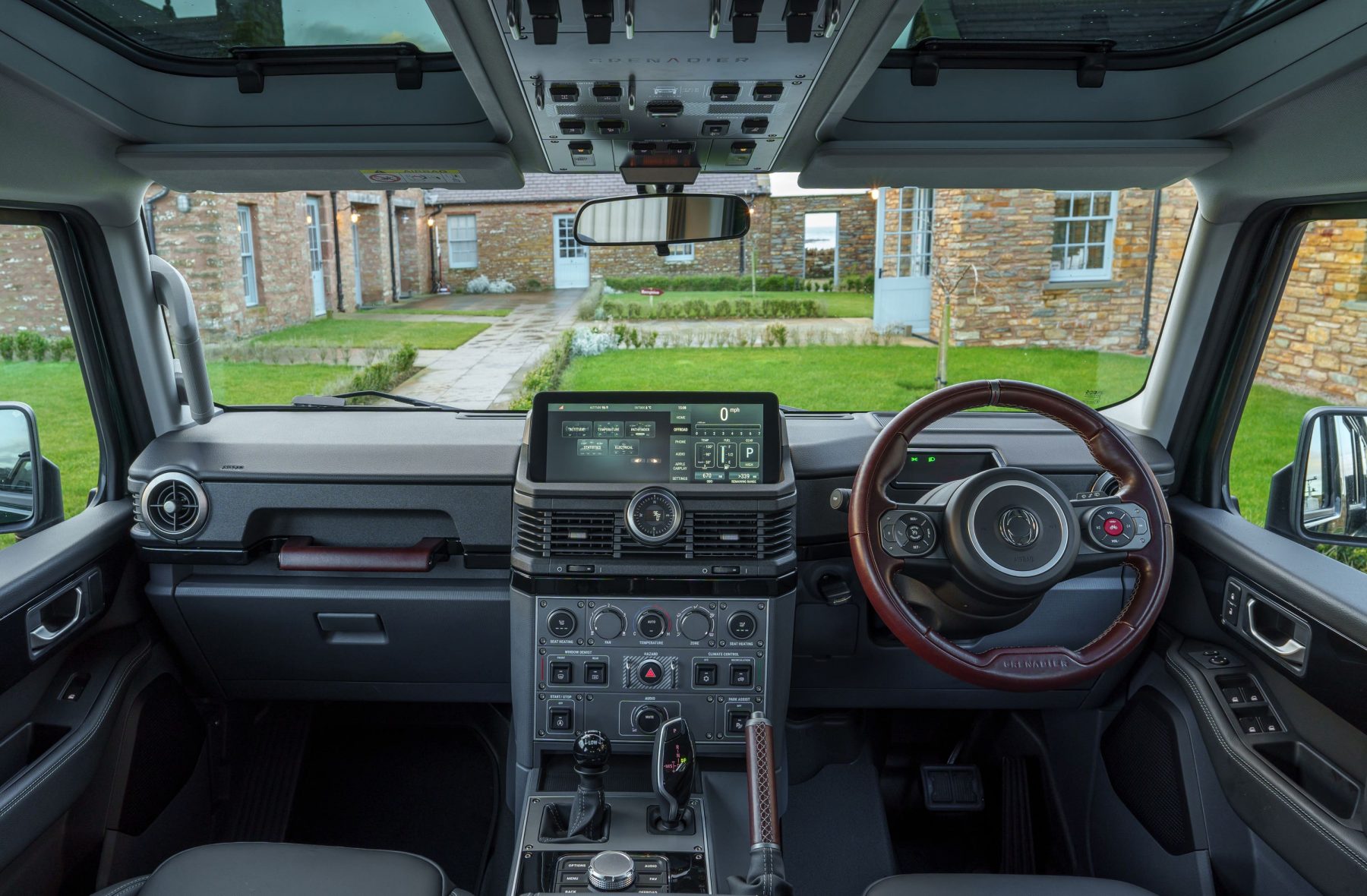
There’s plenty of space to be afforded those inside the cabin of the Grenadier. Those sitting up front have a nice wide view of the road ahead, though the placement of the pedal box for the driver is slightly off-set with a large hump to the left meaning that there’s not an awful lot of room for your feet. However, unlike a classic Defender, there is plenty of room for your right arm, so there’s no need to drive with the window down for the whole time.
The fit and finish is good, though, and everything feels ruggedly put together. The slightly bewildering number of buttons does take getting used to initially, as does the lack of any kind of speedo ahead of you as a drive – it’s on the right-hand side of the main screen instead. We’d much rather have the speed ahead of us, really.
What’s the spec like?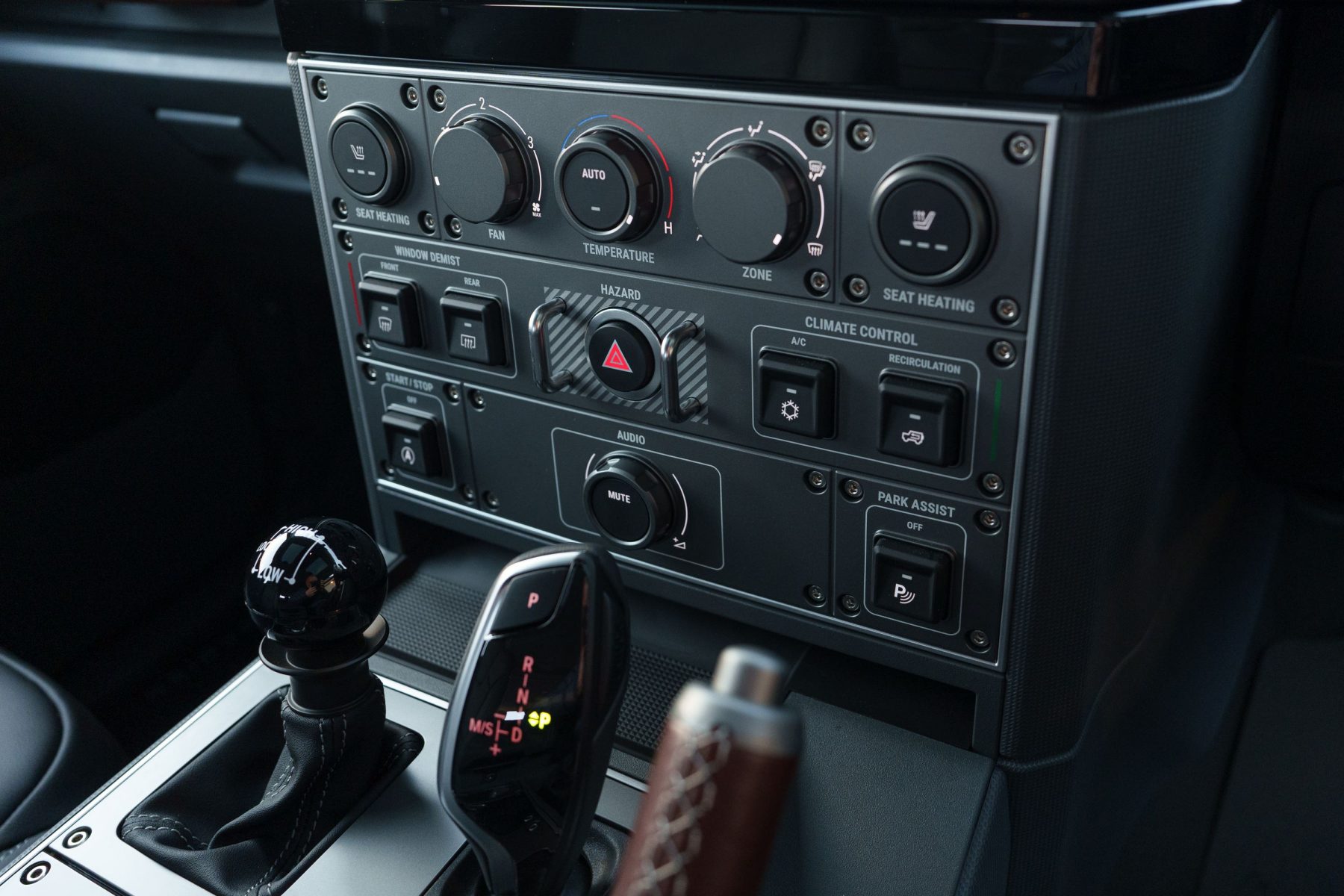
Much of the Grenadier’s specification is there to make it as capable as possible off-road. There are extra ‘packs’ to add, too, with our test car’s Rough and Smooth packs adding the locking front and rear differentials, chunky off-road tyres and parking sensors, alongside puddle lamps and extra charging points for devices inside. The 12.3-inch main screen is the most high-tech feature you’re getting, but it works well and has smartphone mirroring services included. It’s controlled both by touch and also a rotary dial which are both intuitive ways of accessing the system.
But what about price? Well, if you just want the Grenadier as a load-carrying vehicle then the two-seater version will do the job, priced from £64,500. The Station Wagon, like our test vehicle, kicks off from £76,000 which is quite a lot of change, whichever way you look at it. Add some packs and extras and you could easily go past the £80,000 mark.
Verdict
It’s quite tricky to nail down the Grenadier. For one, you can’t fault the approach by Ineos to bring the best in the business on board, so all of this car’s fundamentals are sound. The engines, gearbox and off-road-handling are all top-notch, as is the car’s sense of character which is so often lost in most modern vehicles.
It would’ve been good to have slightly better on-road manners in the Grenadier, particularly when it comes to this car’s wayward steering. But if you’re after a car to rely upon – and have some great adventures with – then the Grenadier could well be the car for you.
Facts at a glance
- Model: Ineos Grenadier
- Price as tested: £78,729
- Powertrain: 3.0-litre twin-turbocharged diesel
- Power: 248bhp
- Torque: 550Nm
- Max speed: 99mph
- 0-60mph: 9.7 seconds
- MPG: 23.3
- Emissions: 310g/km

